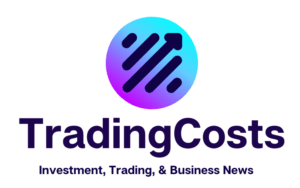In today’s digital age, customer data is often touted as the new gold. The ability to collect, analyze, and act on customer data can provide businesses with insights that lead to better decision-making, optimized strategies, and increased revenues. However, the methods and tools used for data collection can vary widely, and the quality of the data collected can make all the difference. Thus, it’s critical for businesses to adopt the best practices in this domain to ensure they are capturing accurate, relevant, and comprehensive data.
One of the most effective ways to collect customer data is through surveys. Indeed, survey research companies like Slice MR have revolutionized the way we gather and understand customer preferences, opinions, and behaviors. But while surveys are a valuable tool, they are just one piece of the puzzle. Here are some comprehensive strategies and considerations for improving customer data collection.
Understanding the Value of Data Quality over Quantity
It’s easy to get caught up in the numbers game, thinking that the more data you have, the better. But in reality, the quality of the data is far more important than the quantity. Poor quality data can lead to misleading insights, wasted resources, and misinformed decisions.
To ensure high-quality data, consider where and how you’re sourcing it. Are you gathering it directly from customers? Are the methods you’re using likely to lead to honest, unbiased responses? Making sure that the data you collect is both relevant and reliable is the first step toward meaningful analysis.
Diversifying Data Collection Methods

Relying solely on one method of data collection can give a skewed perspective. Different data collection techniques can yield different types of insights. For instance, while surveys might provide quantitative data on customer preferences, interviews or focus groups might provide qualitative insights into why customers feel a certain way.
Furthermore, utilizing different platforms like social media, website analytics, and in-store interactions can give a holistic view of the customer experience. Diversifying the methods ensures a broad understanding and reduces the risk of blind spots.
Respecting Customer Privacy
With the increasing concerns about data privacy, it’s crucial for businesses to ensure that the data they collect is obtained ethically and legally. This means being transparent with customers about what data is being collected, how it will be used, and providing them with an option to opt out.
A transparent approach not only ensures compliance with data protection regulations but also builds trust with customers. When customers feel that their data is being used responsibly and for their benefit, they’re more likely to engage and share information willingly.
Ensuring Data Relevance
Not all data is created equal. Collecting data for the sake of having it can be counterproductive. It’s essential to focus on data that is relevant to your business goals and objectives.
Before initiating any data collection process, define what you’re hoping to achieve. Are you trying to understand customer behavior on your website? Are you looking to gauge the success of a new product launch? By having clear objectives, you can tailor your data collection methods to gather the most relevant data.
Incorporating Real-time Data Collection
The speed at which the business world operates has accelerated, and so has the rate at which customer preferences and behaviors change. Real-time data collection allows businesses to stay agile, responding to shifts in the market quickly.
Tools and platforms that allow for real-time data collection and analysis can provide instant feedback. For instance, if a marketing campaign is launched, real-time data can provide immediate insights into its performance, enabling quick adjustments if necessary.
Investing in Data Analysis Tools and Expertise
Collecting data is just the first step. Analyzing this data to derive actionable insights is where the real value lies. Investing in data analysis tools and, if possible, data experts, can help turn raw data into meaningful strategies.
Sophisticated data analysis tools can uncover patterns, trends, and correlations that might go unnoticed otherwise. Combining these tools with the expertise of data professionals ensures that the insights derived are both accurate and actionable.
Leveraging Technology to Enhance Data Collection
In today’s world, technology plays a pivotal role in data collection. From advanced customer relationship management (CRM) systems to artificial intelligence (AI)-powered analytics, the integration of tech solutions can streamline the collection process and enhance the accuracy of the data obtained.
For instance, adopting AI-driven chatbots on websites and social media platforms can engage with customers in real time. These chatbots can ask targeted questions, gathering data seamlessly during interactions. Moreover, machine learning models can predict customer behaviors and preferences based on historical data, allowing businesses to anticipate future trends.
Encouraging Customer Engagement Through Incentives
One challenge many businesses face when collecting data is the reluctance of some customers to share their information or feedback. By offering incentives—be it discounts, exclusive offers, or loyalty points—companies can motivate customers to provide the necessary data.
While offering incentives, it’s crucial to ensure that the feedback or data collected remains unbiased. The key is to design incentives in a manner that encourages genuine interaction and not just participation for the sake of rewards.
The Importance of Feedback Loops
Creating feedback loops with customers can significantly enhance data collection processes. Feedback loops refer to the process of taking action based on customer feedback and then communicating those actions back to the customer.
For example, if customers provide feedback about a product feature they’d like to see improved, businesses can work on that feedback and then communicate back when the change is implemented. This not only showcases a company’s commitment to listening but also encourages more customers to share their feedback, knowing it leads to tangible results.
Visual Data Collection Through Heatmaps and Recordings
Visual tools like heatmaps and session recordings have become invaluable in understanding customer behaviors, especially in online environments. Heatmaps show where customers click, move, or scroll on a page, giving insights into which areas of a website are most engaging or might be causing confusion.
Session recordings, on the other hand, allow businesses to observe the real-time journey of a user on their platform. These tools, when used ethically and with full transparency, can provide in-depth insights into user experience and areas of potential improvement.
The Role of Social Listening in Data Collection

Social media platforms are a goldmine for customer insights. With social listening tools, businesses can monitor mentions of their brand, products, or industry-related topics. This form of data collection allows companies to understand customer sentiment, identify potential PR crises before they escalate, and discover areas of opportunity in their market.
By actively engaging in social listening, businesses can tap into unsolicited feedback and sentiments, which often offer a more candid view than structured surveys or interviews.
Collaborating with External Data Providers
Sometimes, internal data collection might not suffice, especially when businesses are looking for broader market insights or data from niche segments. In such cases, collaborating with external data providers or market research firms can fill in the gaps.
These providers often have vast databases and specialized tools to gather specific types of data, giving businesses access to insights they might not be able to gather on their own. However, it’s essential to ensure the authenticity and reliability of these external sources to maintain data quality.
The Future of Customer Data Collection
Improving customer data collection is an ongoing journey. As businesses navigate this landscape, it’s essential to keep the customer at the forefront. The ultimate goal should always be to better understand and serve the customer. By prioritizing data quality, diversifying collection methods, respecting privacy, ensuring relevance, incorporating real-time insights, investing in analysis, and continuously adapting, businesses can make informed decisions that drive growth and success. Remember, in the vast sea of data, it’s the meaningful insights that chart the path forward.










